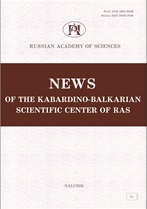|
System analysis, management and information processing
Dynamic system of functioning of social network communities
E. P. Okhapkinaab, V. P. Okhapkinc, R. V. Mescheriakovd, A. O. Iskhakovad, A. Yu. Iskhakoved
a Bauman Moscow State Technical University, 105005, Russia, Moscow, 2nd Baumanskaya street, 5, build. 1
b Russian State University for the Humanities, Moscow, 125047, Russia, Moscow, Miusskaya Square 6
c Center of Expert and Analytical and Information Technologies of Accounts Chamber of the Russian Federation,
119021, Russia, Moscow, Zubovsky blvd., 21, build. 3
d V. A. Trapeznikov Institute of Control Sciences of Russian Academy of Sciences, Moscow, 117997, Russia, Moscow, 65 Profsojuznaja street
e Moscow State Institute of Electronics and Mathematics, 123458, Russia, Moscow, 34 Tallinskaya street
Abstract:
Social networks are no longer used only as a tool for global communication of various
segments of society in different countries. It is turned into a socio-political asset in the struggle for the
specific interests of a group of people who can acquire and/or manage this asset. In the paper we use
data of a number of communities of the Russian-Ukrainian segment of the social network «Vkontakte». The study formalizes one of the functional features of a social network: a community (group).
The community is considered from the position of a tool for forming opinions and aggressive influence on a single person, some small or wide community. The issue of using information and communication technologies in a destructive way is being updated. The processes occurring in the social network community are shown in the form of a system of first-order differential equations. The system is
investigated for stability by the method of Lyapunov functions. One of the tasks of the study is to
identify and characterize the border regimes in which the functioning of the community goes from a
stable state to chaos. The simulation model of the constructed dynamic system under different initial
simulation conditions is considered. The use of mathematical physics tools to describe the processes
of cyber-physical systems, including in the task of evaluating text messages with signs of aggression,
in a distributed computing environment allows us to assess the trajectory of their evolvement under
various initial conditions.
Keywords:
differential equations, social network services, system dynamics, information and communication technologies, stability analysis, simulation modeling, dynamic equilib.
Received: 17.03.2022
Accepted: 31.03.2022
Citation:
E. P. Okhapkina, V. P. Okhapkin, R. V. Mescheriakov, A. O. Iskhakova, A. Yu. Iskhakov, “Dynamic system of functioning of social network communities”, News of the Kabardino-Balkarian Scientific Center of the Russian Academy of Sciences, 2022, no. 2, 41–71
Linking options:
https://www.mathnet.ru/eng/izkab428 https://www.mathnet.ru/eng/izkab/y2022/i2/p41
|


| Statistics & downloads: |
| Abstract page: | 65 | | Full-text PDF : | 43 | | References: | 20 |
|



 Contact us:
Contact us: Terms of Use
Terms of Use
 Registration to the website
Registration to the website Logotypes
Logotypes